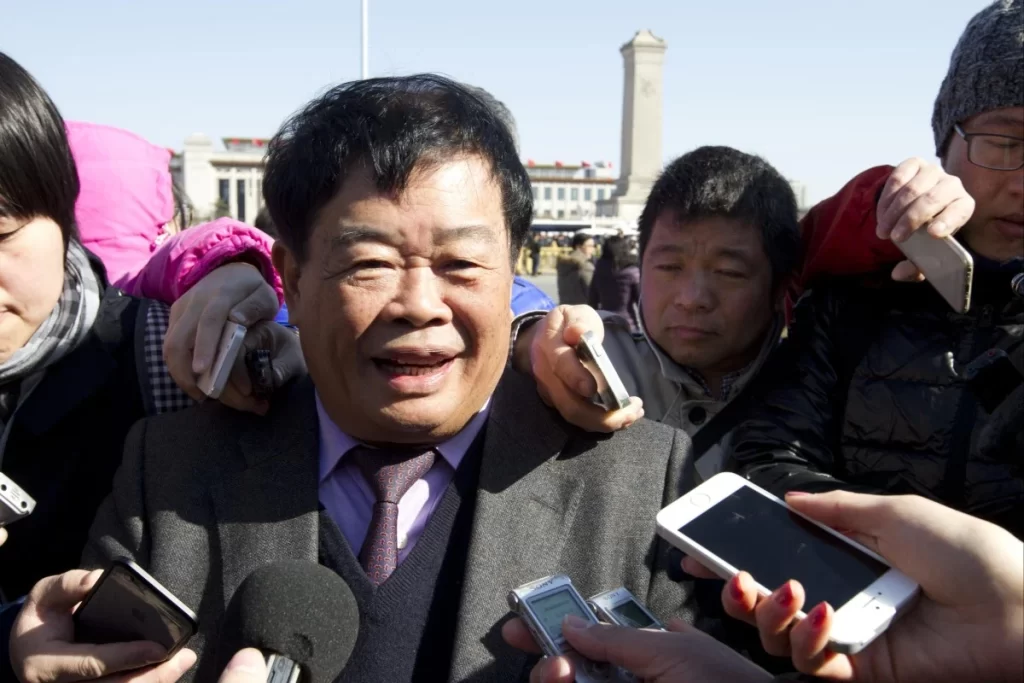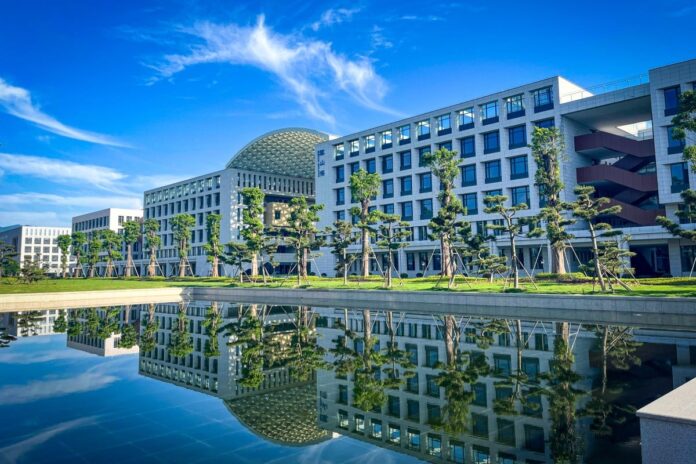Chinese entrepreneurs’ philanthropy helps lure world-class scholars. Fuyao University of Science and Technology, which began enrolling students this year, trumpets faculty’s international credentials. China’s super-rich have a new must-have possession: their own university.

- Billionaire Cao Dewang, chairman of glass manufacturer Fuyao Group
Fuyao University of Science and Technology, in Fuzhou, Fujian province, will welcome its first students this year.
China’s growing number of universities funded by entrepreneurs are attracting more world-class scholars, aligning with Beijing’s intensifying push for hi-tech self-sufficiency, analysts said.
Fuzhou’s Fuyao University of Science and Technology (FYUST), established with a US$10 billion donation from billionaire Cao Dewang, the chairman of glass manufacturer Fuyao Group, began enrolling students this year, and says its inaugural faculty line-up includes 15 academicians from home and abroad, covering cutting-edge fields such as artificial intelligence, life sciences and materials science.
“The university currently has 302 faculty members, with 71.2 per cent having overseas study or work experience, including 15 academicians and 56 scientists ranked in the top 2 per cent globally [in their fields],” FYUST vice-president Xu Fei told Xinhua this month.
FYUST has recruited renowned scholars from China, as well as North America, Europe and Japan. Among those from overseas, Canadian academicians and professors are particularly prominent, with scholars from the United Kingdom, Japan, Germany and Austria also occupying important positions.
READ ALSO: China’s 2025 two sessions and implications for Nigeria
Many hold prestigious academic honours, such as being fellows of the Institute of Electrical and Electronics Engineers, the UK’s Royal Society, the Canadian Academy of Engineering, or members of the Japan Academy. They have previously held positions at top foreign universities, including Cambridge, Toronto, Ulm and Tohoku, according to FYUST’s website.
If foreign scientists can bring their knowledge and patents to China, it will help China bridge the technological gap with the United States and Europe, said Jean-Pierre Cabestan, a professor with the department of government and international studies at Hong Kong Baptist University.
“It will help Chinese universities to internationalise in a context where Chinese academics are more and more isolated from the rest of the world,” Cabestan said.
The list of billionaire-funded universities is becoming longer and they share a common goal: to support national strategy, address technological bottlenecks and produce talent that can propel China’s industries forward.
FYUST has said it will integrate students into laboratories in their second year and foster practical skills through university-industry collaboration. FYUST president Wang Shuguo says it aims to see newly enrolled undergraduates earn their doctorates within eight years, allowing them to enter high-end research fields in their mid-twenties, with the model able to cultivate top young talent with both theoretical depth and industry expertise.
The Eastern Institute of Technology (EIT), founded in Ningbo by semiconductor mogul Yu Renrong with a 46 billion yuan (US$6.36 billion) investment, is also welcoming its first undergraduate cohort this year, after enrolling doctoral students for the past three years.
Why are more Chinese scientists leaving the US to return to China?
According to its website, EIT has over 90 principal investigators in charge of clinical trials or scientific research projects, including 15 academicians, 23 fellows of prestigious international academic organisations, and 53 professors with experience at universities ranked in the top 200 worldwide.
Hangzhou’s Westlake University, which pioneered the entrepreneur-funded model, has also attracted top scholars from overseas.
Italian mechanical engineer Marco Amabili, an international member of the US National Academy of Engineering, established the Dynamics and Vibrations of Systems and Structures Lab at Westlake’s school of engineering in 2023. Thierry De Pauw, a leading Belgian mathematician, and Lei-Han Tang, a globe-trotting Chinese statistical physicist, joined Westlake last year.
However, the long-term sustainability of such universities remains uncertain due to potential shifts in policy and funding challenges, according to observers of China’s education sector.
Xiong Bingqi, director of the 21st Century Education Research Institute, a think tank based in Beijing, said the recruitment of high-quality faculty is crucial to their ambitions to become research institutions, and the competitive salaries they are able to offer helps in that regard.
“However, public debates persist regarding their educational positioning,” he said. “Under China’s current regulatory framework, achieving a differentiated development path from China’s top public universities is no easy task.”
Whether they have sufficient endowments to sustain long-term research-driven growth is another concern, Xiong added.
Rory Truex, an assistant professor with Princeton University’s department of politics, said China offers highly competitive salaries and research funding at a time when Western universities face budget cuts, creating an opportunity for China to compete more effectively in the fields of science, technology, engineering and mathematics. However, he added, US scrutiny of academic collaborations with China is tightening.
“In the current US political climate, joining a Chinese university carries risks, increasing the likelihood of government scrutiny,” he said. “Given the history of the ‘China Initiative’, American researchers’ participation in Chinese talent programmes has become increasingly rare.”
The China Initiative, launched in 2018 during US President Donald Trump’s first term, targeted Chinese academics in the US suspected of involvement in economic espionage. It was widely criticised for leading to misguided, racially motivated and excessive prosecution and was scrapped by Trump’s successor, Joe Biden, in 2022.
- South China Morning Post














